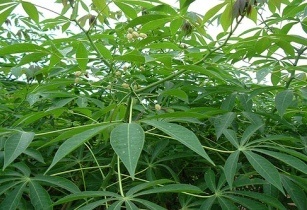The high cost of imported rice in Guinea, West Africa, has led to a change in diets and an increased use of cassava, which can provide three tonnes of food from a single planted hectare
Statistics showed that the cultivated area of cassava plant more than doubled from 58,424 ha in 2004 to 122,550 ha in 2011, according to the country’s National Agency for Food Security (SNSA).
“Cassava is truly a vital crop for food security because it provides both its leaves and a starchy tuber to low-income consumers,” explained Kandia Traoré, an agricultural advisor.
Around 775,500 tonnes of the crop was harvested last year as it became the second most commonly eaten food in Guinea.
El-Sanoussy Bah, head of the cassava programme at the Guinean Institute for Agronomic Research, said, “Cassava is both a staple and an accompaniment for our people. It is also a source of income for farmers,”
Mamadi Condé, a 54-year-old farmer from Guinea, has a family plot in the Babila district where he grows cassava on one hectare.
“I harvested nearly six tonnes of cassava last August,” he commented.
Guinea produces limited quantities of rice domestically and imports 200-300,000 tonnes of rice from Asia yearly.
“The cassava trade is flourishing in this region and we created a co-operative in 2010 to sell our produce in Conakry, the capital, to benefit even more,” Makoura Camara, a cassava vendor in the Kouroussa market, revealed.





